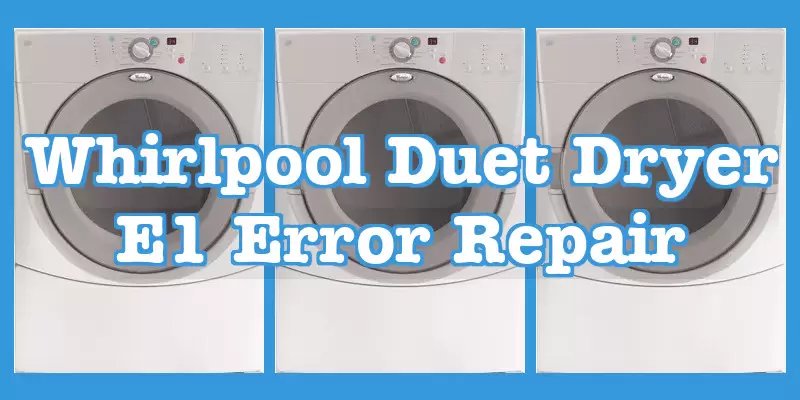
You might be thinking, “It’s just a letter and a number – how bad can it be?” Well, here’s the deal: when your dryer flashes Error Code E1, it’s trying to tell you something is amiss with the drying process, specifically a problem with the thermistor. The thermistor is a small component that measures temperatures and helps control the dryer’s heat. When this part doesn’t work correctly, it can spell trouble for your clothing and your machine. But don’t worry! Let’s break it down and see if, and when, you might need to call in the experts.
Understanding Error Code E1 on Whirlpool Dryers
So, what’s happening when you see E1? Think of it like your dryer is raising a little red flag. The thermistor is basically the dryer’s thermometer. If it’s giving out wrong readings, the dryer might not heat up properly, or worse, it could overheat. Imagine trying to bake a cake with a broken oven thermometer – it’s likely to end up undercooked or burned! That’s why error codes are so important; they’re a warning system to prevent further damage.
A faulty thermistor can halt the drying process, leaving you with a pile of wet clothes. It’s like having a roadblock on the highway – you simply can’t get through until it’s cleared. This can be frustrating, especially when you’ve got laundry piling up. The E1 error code is simply your dryer’s way of saying, “Hey, something isn’t right here!”
However, don’t panic just yet. This doesn’t mean it’s time to replace your dryer entirely. Instead, it’s a cue to pay attention and potentially seek professional assistance. But before you do that, there are a few things you can try on your own.
Troubleshooting the E1 Error Code
Firstly, let’s try to tackle this problem like a detective. A common first step is to reset the dryer. Unplug it from the power source, wait a few minutes, and then plug it back in. Think of it as giving your dryer a little nap to reset itself. Sometimes, this can clear minor glitches and get things back to normal.
If resetting doesn’t work, you might need to check the thermistor itself. Accessing it might require a bit of courage and a screwdriver, as you’ll have to open up part of the dryer. The thermistor is usually located near the blower housing. Once you find it, inspect it for visible damage or disconnection. If you’re unsure what it looks like, think of it as a small, usually white or black sensor.
If the thermistor seems fine but the error code persists, checking the wiring connections for any loose or frayed wires can be helpful. It’s like checking the cables on your TV when it won’t turn on – sometimes the solution is as simple as plugging something back in.
When to Call a Technician
So, you’ve tried the DIY methods, and that pesky E1 code is still hanging around. Now what? Here’s where calling in the pros becomes the best option. A trained technician can delve deeper into the issue with tools and expertise that most of us don’t have in our toolkits.
A technician will conduct a thorough examination, which might involve testing the electric resistance of the thermistor or checking for more complex electrical issues within the dryer. They can replace the thermistor if necessary or address any underlying problems that aren’t immediately visible. It’s like getting a personal trainer to help with a workout that’s beyond your current capabilities – you’re ensuring everything is done safely and effectively.
Calling a technician is particularly wise if your dryer is still under warranty. Attempting complex repairs on your own could void that valuable warranty coverage. Plus, having peace of mind knowing an expert is tackling the problem is priceless.
Preventative Measures and Tips
Now that you know what to do when you encounter Error Code E1, let’s talk about prevention. Regular maintenance can prolong the life of your dryer and help you avoid these pesky error codes in the future. It’s a bit like taking your car for regular tune-ups – these small efforts can prevent bigger problems down the road.
Start by cleaning the lint filter after every use. A clogged filter can lead to overheating, which might trigger issues with the thermistor. Additionally, ensure the area around your dryer is well-ventilated and free from obstructions, as good airflow is crucial for effective and safe drying.
Consider scheduling regular professional maintenance checks, especially if your dryer is older. A technician can spot potential issues before they escalate, saving you stress and money in the long run. Just like visiting the dentist for a cleaning every six months – it’s about maintaining overall health and catching any small problems early.
By being proactive and attentive, you can keep your Whirlpool dryer running smoothly and efficiently, leaving you more time to enjoy the fresh, warm laundry loads you love.